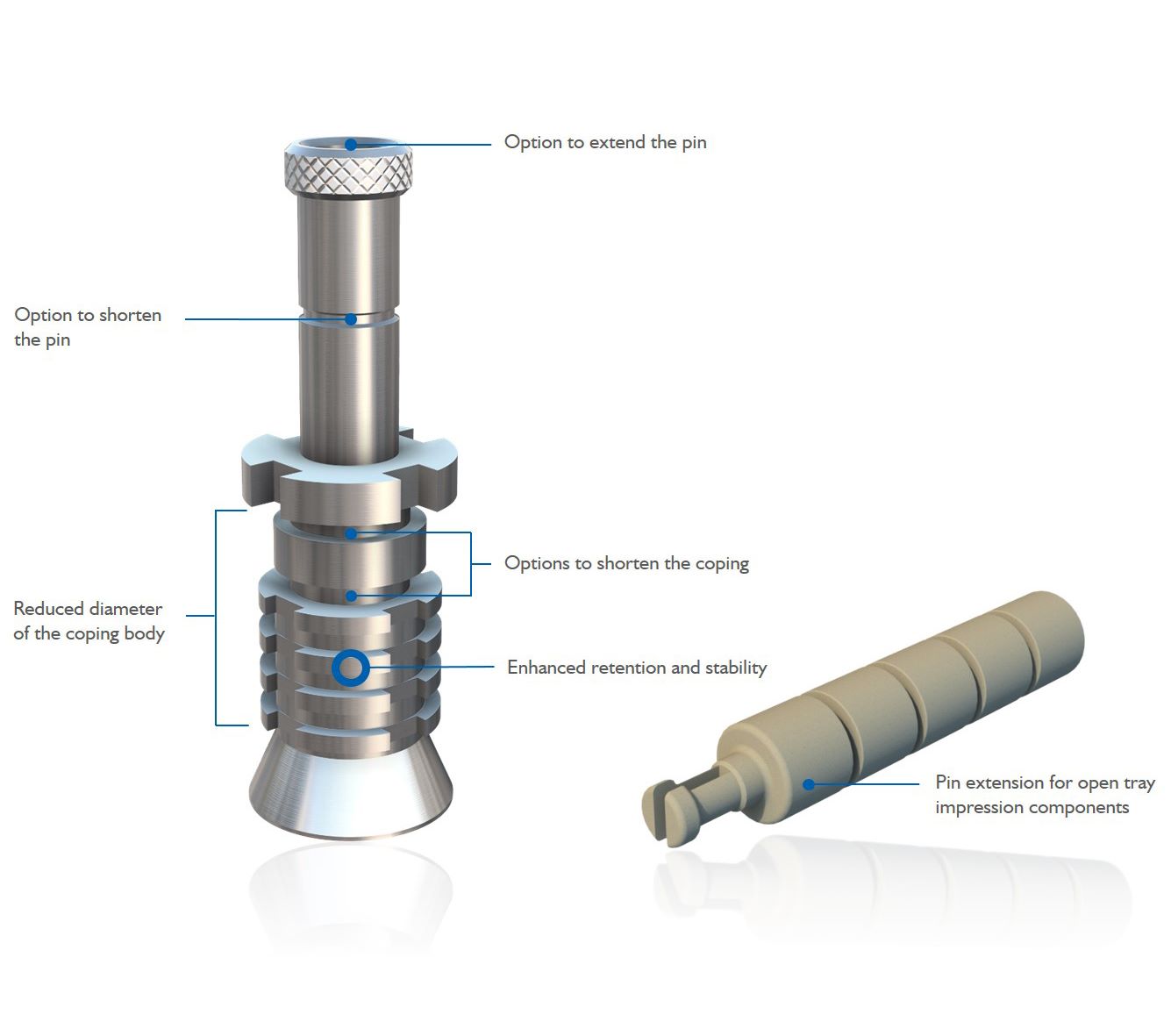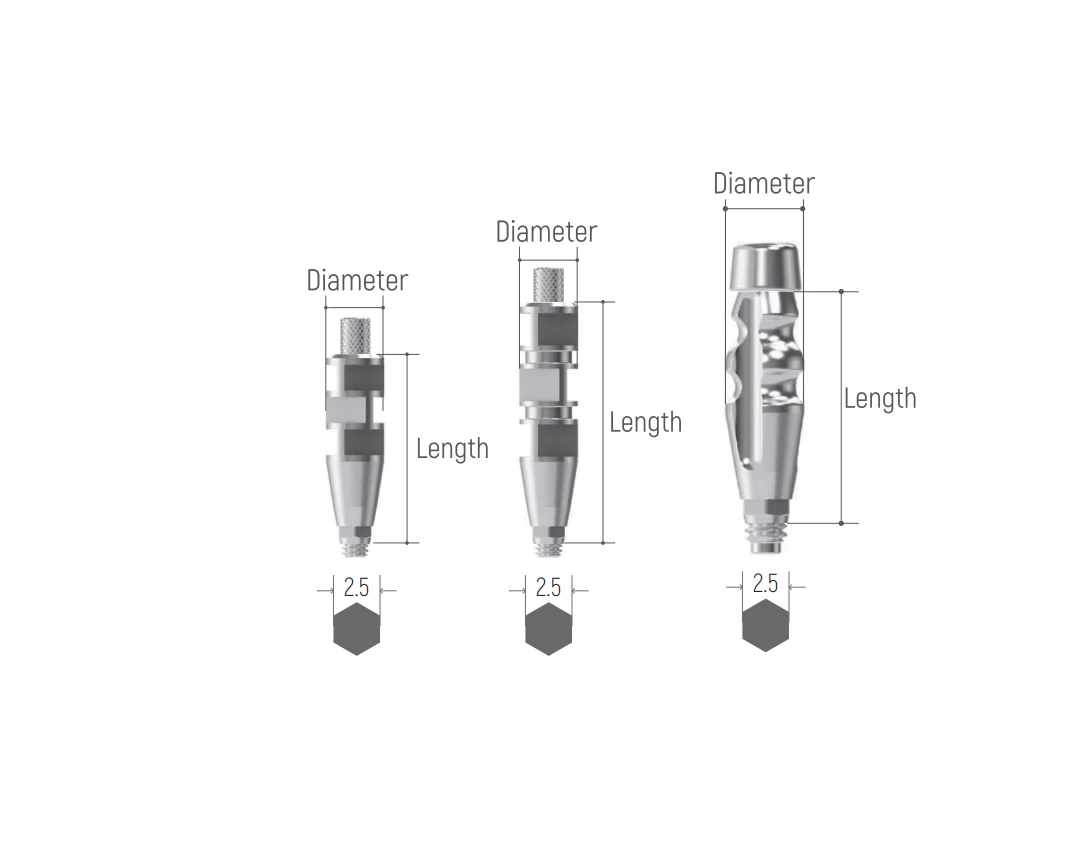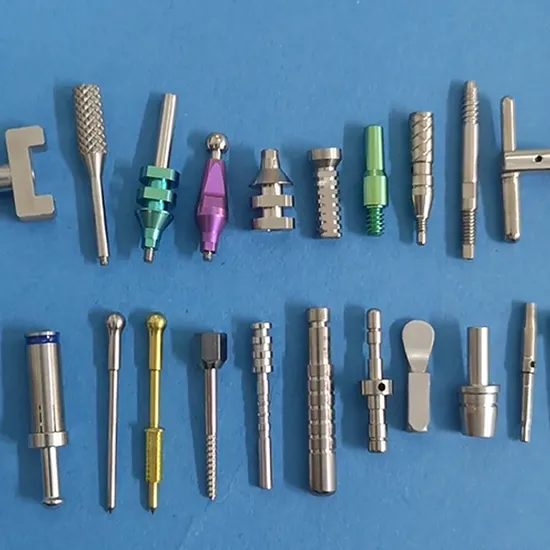Open-tray impression copings from Manners Technology deliver sub-10μm precision for dental implants, ensuring accurate prosthetic fit and clinical reliability.


Open-tray impression copings are specialized restorative components used in dental implant procedures to accurately transfer the three-dimensional position of implants to laboratory models. By capturing the exact spatial orientation of implants within the arch, open-tray impression copings enable technicians to fabricate prosthetics with optimal fit and function. The design accommodates both single-unit and multi-unit restorations, making it particularly valuable for complex full-arch rehabilitations where millimeter-level precision is crucial.

At Manners Technology, we manufacture these copings with sub-10μm tolerances using medical-grade titanium, ensuring perfect compatibility with all major implant systems while maintaining the dimensional stability required for clinical success.
In the intricate world of dental implantology, open-tray impression copings serve as the unsung heroes of prosthetic accuracy. These precision components bridge the gap between the surgeon's placement and the technician's artistry, ensuring restorations fit with micron-level perfection. Their applications span the entire spectrum of implant dentistry, from single-tooth replacements to complex full-mouth rehabilitations, making them indispensable tools in contemporary dental practice.
For single implant cases, particularly in the esthetic zone, open-tray copings provide unmatched precision in capturing emergence profiles. The direct visualization allowed by their design enables clinicians to verify complete seating before impression material sets - a critical advantage when recreating natural-looking gingival contours. Anterior cases benefit especially from this technology, where even 100 microns of discrepancy can mean the difference between an undetectable restoration and an obvious prosthetic. The copings' rigid connection maintains the exact spatial relationship between implant and soft tissue during impression taking, allowing technicians to craft crowns with biologically harmonious margins.

Multi-unit implant cases reveal the true value of open-tray impression techniques. When fabricating bridges spanning three or more implants, the copings maintain precise inter-implant relationships that closed-tray methods simply cannot match. This becomes increasingly crucial as implant divergence angles grow - a common scenario in posterior quadrants where anatomical limitations dictate placement. The copings' extended design permits verification of parallelism before final impression setting, helping technicians create frameworks with true passive fit. This precision directly impacts long-term success, as poorly fitting multi-unit restorations can lead to screw loosening, bone loss, or even implant failure.
Full-arch implant rehabilitations represent the most demanding application of open-tray impression technology. In these cases, the copings serve as the foundation for complex prostheses that must distribute occlusal forces across multiple implants with perfect balance. The open-tray method's ability to maintain rigid connections between six, eight, or even ten implant analogs simultaneously is unparalleled. This proves particularly valuable in immediate load cases, where provisional prostheses must fit precisely from the moment of placement. The extended coping design also facilitates special techniques like the use of verification jigs, allowing clinicians to confirm impression accuracy before sending cases to the laboratory.
Open-tray impression copings represent a pinnacle of dental manufacturing, where micron-level precision meets clinical functionality. These specialized components feature three distinct sections: a precisely machined implant interface that mimics the connection geometry of specific implant systems, an extended cylindrical body that projects through impression material, and retention elements that lock into the set impression.

The manufacturing journey begins with certified titanium alloy rods that undergo rigorous material verification. Spectrographic analysis confirms chemical composition while ultrasonic testing detects any internal flaws. This attention to material science is crucial, as the copings must withstand repeated sterilization cycles without deformation or corrosion. The raw material is then precision-cut to near-net shape using CNC-controlled saws that maintain ±0.01mm length tolerances - a critical first step that ensures consistent machining conditions.
At Manners Technology, our advanced CNC equipment, including Citizen Cincom and Star SB-series Swiss-type lathes, enables complete machining in a single setup, maintaining sub-10μm tolerances for critical connection geometries. The dual-spindle configuration ensures concentricity along the coping's extended length while specialized toolpaths optimize chip load and minimize thermal distortion—a crucial factor when machining thin-walled sections.
Machining these components requires specialized Swiss-type lathes equipped with dual spindles and live tooling capabilities. The main spindle first machines the implant interface geometry using micro-tools as small as 0.3mm in diameter to create precise internal features like hex lobes or anti-rotation grooves. During this phase, the machine's linear motor drives maintain positioning accuracy within 1 micron while advanced cooling systems control thermal expansion. The sub-spindle then takes over to complete the extended body and retention features in a single clamping, ensuring perfect alignment between all sections.

The coping's extended slender shape demands particular machining considerations. Thin-wall machining strategies employ variable pitch tools to prevent harmonic vibration, while dynamic toolpath algorithms adjust feed rates in real-time based on cutting forces. For the retention undercuts, wire EDM (Electrical Discharge Machining) creates precise geometries without introducing mechanical stresses. Post-machining stress relief treatments stabilize the crystalline structure, ensuring dimensional stability through countless sterilization cycles.
The entire manufacturing process reflects an intricate balance between precision engineering and clinical functionality. From the implant interface's sub-10μm tolerances to the retention zone's optimized surface texture, every detail serves both mechanical and biological requirements. This harmonious integration of form and function makes open-tray impression copings manufactured by Manners a testament to the art and science of dental manufacturing - components where engineering precision directly translates to clinical success.